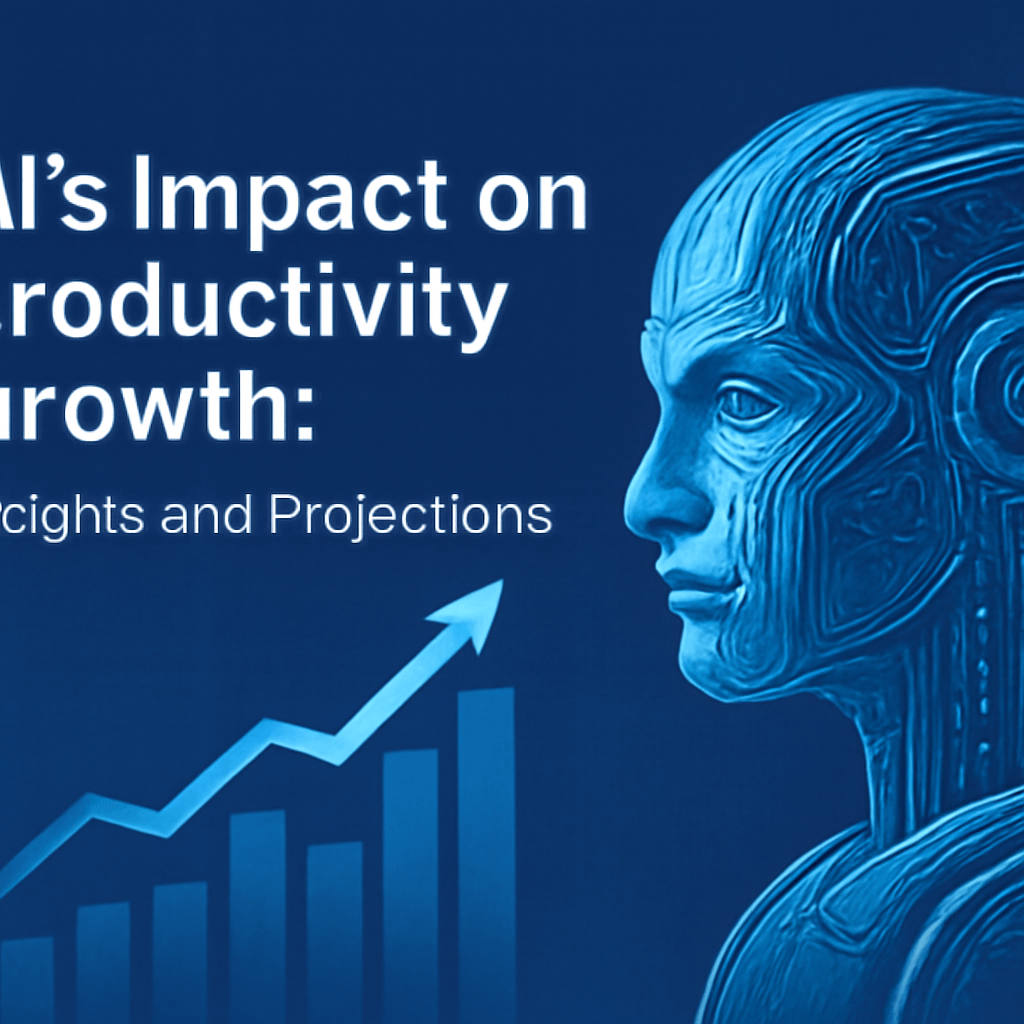AI’s Impact on Productivity Growth: Insights and Projections

Last year at Banyan Hill’s Total Wealth Symposium at the Ritz Carlton in Orlando, Florida, I laid out a thesis on AI’s potential to turbocharge economic output. Nearly a century ago, futurist Buckminster Fuller observed that technology enables us to do more with less—eventually letting us “do everything with nothing.” Today, generative AI is poised to compress decades of incremental productivity gains into just a few years, redefining what we consider normal growth.
Historical Productivity Gains: From Tractors to Transformers
Economists track long-term productivity growth by measuring output per unit of input. A classic example:
- In 1900, a hand-cultivating farmer produced roughly 10 bushels of wheat per day.
- By 2024, with GPS-guided combines, precision irrigation, AI-optimized fertilization and telematics, the same farm can yield 1,000 bushels per person-day—100 times more output with equal or less labor.
That century-long transformation was driven by mechanical innovation, chemical breakthroughs and digital controls. Now, AI promises to achieve similar multiplicative effects in knowledge sectors.
What Is AI Already Doing for Productivity?
Empirical Evidence Across Industries
- A 2023 Deloitte survey found generative AI cut content-creation time by 65% in marketing teams using tools like Adobe Sensei.
- A December 2023 study at MIT demonstrated AI-assisted coding environments increased developer throughput by over 2X, reducing debugging cycles by 30%.
- In customer support, agents leveraging models such as GPT-4 Turbo resolved 14% more tickets per hour and reached “experienced” performance four times faster than peers without AI assistance.
Crucially, gains aren’t limited to star performers—the biggest uplifts occur among mid- and lower-skill workers, raising both the floor and ceiling of output. Automating routine tasks like drafting emails, summarizing meetings or parsing data frees teams for strategic thinking and innovation.
Technical Foundations of Generative AI
Modern generative models are built on transformer architectures, which leverage self-attention mechanisms to process long text sequences in parallel. Key technical drivers include:
- Scale: Model parameter counts have surged from hundreds of millions (GPT-2) to hundreds of billions (GPT-4), following power-law scaling that improves performance predictably with compute and data.
- Compute Advances: Custom AI accelerators (e.g., NVIDIA H100, Google’s TPU v4) deliver >100 petaflops of mixed-precision throughput, cutting training times and inference latencies.
- Context Expansion: GPT-4 Turbo and open-source variants now handle up to 128K tokens, enabling document-level analysis, code generation and real-time data augmentation.
Case Studies in Industry Adoption
Pharmaceuticals and Materials Science
DeepMind’s AlphaFold reduced protein-folding predictions from months to seconds, accelerating drug discovery pipelines. At Caltech, AI-driven molecular simulations cut novel material design cycles from five years to under one year.
Financial Services
Quant funds leverage reinforcement-learning agents to rebalance portfolios in milliseconds. Morgan Stanley reports AI advisors increased client engagement by 30% while slashing operational costs by 18%.
Manufacturing and Energy
Digital twins powered by real-time sensor data and AI forecasting optimize plant operations, boosting throughput by 10–15% and reducing unplanned downtime by 25%.
Economic Modeling: Productivity Forecasting and Macroeconomic Impact
“AI is a general-purpose technology akin to electricity or the internet, with the potential to unlock trillions in GDP,” says Dr. Michael Chui, partner at McKinsey Global Institute.
Current projections:
- McKinsey (2024 update) forecasts AI could contribute up to $13 trillion in cumulative GDP uplift by 2030, with a 1.2 percentage-point annual productivity boost in advanced economies.
- Goldman Sachs estimates generative AI may increase global GDP by $8 trillion by 2033, driven by faster innovation and labor reallocation.
Even a modest shift from 1.5% to 2.4% annual productivity growth compounds to a doubling of output over 20 years.
Policy and Workforce Implications
Rapid diffusion demands parallel investment in human capital. Today, the U.S. invests under 0.1% of GDP on workforce training, while the CHIPS and Science Act allocates $52 billion for domestic semiconductor and AI research. Key considerations:
- Reskilling Programs: Public-private partnerships should fund AI literacy and certification to reduce the 6-month ramp-up time for new hires.
- Regulatory Frameworks: The EU AI Act and forthcoming U.S. guidelines will shape responsible deployment, balancing innovation with data privacy and model transparency.
- AI Governance: Standards for auditing model bias, carbon-footprint accounting and supply-chain security will determine who captures the greatest productivity gains.
The Compounding Effects of AI Self-Improvement
Open-source projects like AutoGPT and fine-tuning toolkits enable models to iterate on their own architectures and hyperparameters. As AI contributes to its own advancement, we may witness an acceleration beyond current forecasts—a phenomenon some experts term the “AI feedback loop.”
Conclusion: Navigating the AI Boom
AI’s capacity to automate 60–70% of routine knowledge tasks could free workers for creativity and strategic initiatives. To capture the full upside, organizations and governments must invest aggressively in training, infrastructure and governance. With the right policies and technical roads maps, the AI economic boom is not just on the horizon—it’s already unfolding.
Ian King
Chief Strategist, Banyan Hill Publishing